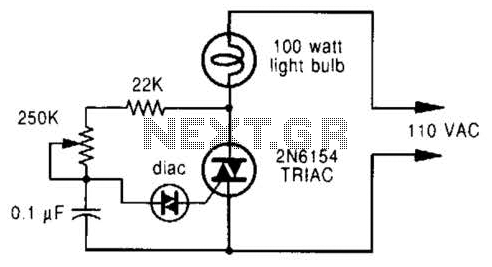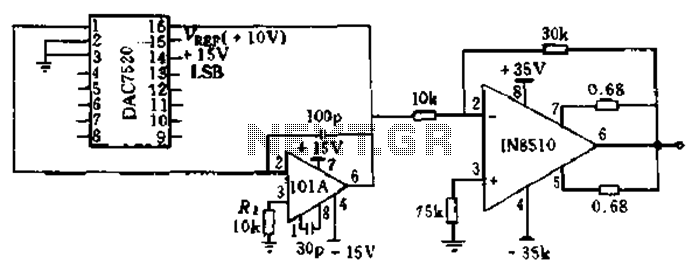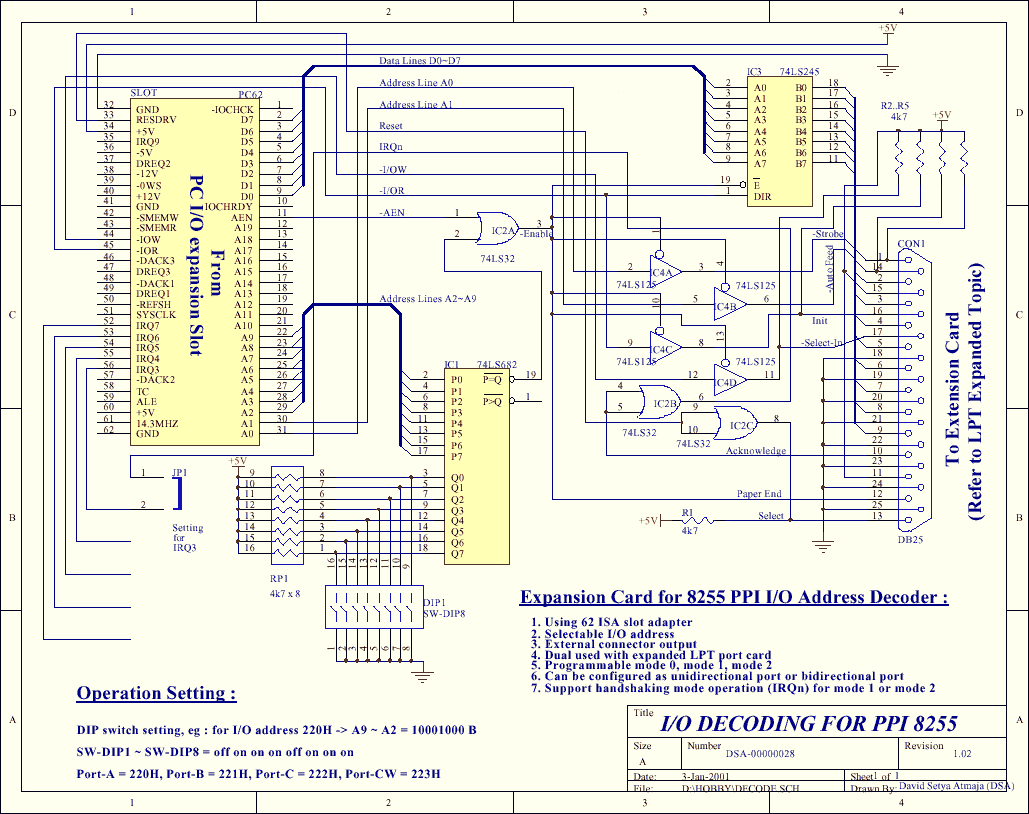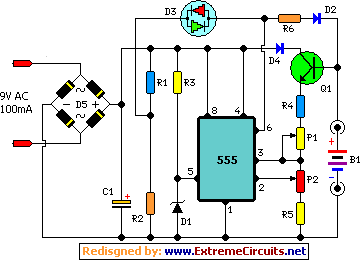
Simple Negative Supply Circuit
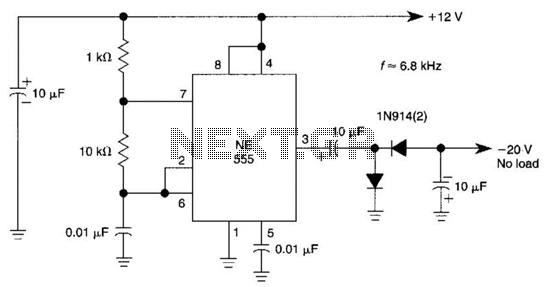
This DC negative-voltage generator based on the 555 produces a negative output voltage equal to approximately 2 times the DC supply voltage.
The described circuit utilizes the popular 555 timer IC configured in an astable or monostable mode to generate a negative output voltage. The principle behind this design involves the use of charge and discharge cycles of a capacitor, which are controlled by the timing resistors and capacitor connected to the 555 timer.
In this configuration, the 555 timer is powered by a positive DC voltage supply. When the timer operates, it alternately charges and discharges the capacitor, which creates a square wave output. By employing a specific transformer or inductor in conjunction with a rectifier circuit, the output can be inverted to produce a negative voltage.
The output voltage can be regulated to reach approximately twice the magnitude of the input supply voltage, depending on the design of the transformer and the load connected to the circuit. This is particularly useful in applications requiring a negative voltage rail for operational amplifiers, sensors, or other electronic components that require a dual power supply setup.
To ensure stability and efficiency, it is essential to select appropriate values for the timing components (resistors and capacitors) and to consider the load conditions. Additional filtering capacitors may also be included at the output to smooth out any ripple voltage, thereby improving the overall performance of the negative-voltage generator.
Overall, this 555-based negative-voltage generator offers a simple and effective solution for generating a negative voltage supply in various electronic applications. This dc negative-voltage generator based on the 555 produces a negative output voltage equal to approximately 2x the dc supply voltage.
The described circuit utilizes the popular 555 timer IC configured in an astable or monostable mode to generate a negative output voltage. The principle behind this design involves the use of charge and discharge cycles of a capacitor, which are controlled by the timing resistors and capacitor connected to the 555 timer.
In this configuration, the 555 timer is powered by a positive DC voltage supply. When the timer operates, it alternately charges and discharges the capacitor, which creates a square wave output. By employing a specific transformer or inductor in conjunction with a rectifier circuit, the output can be inverted to produce a negative voltage.
The output voltage can be regulated to reach approximately twice the magnitude of the input supply voltage, depending on the design of the transformer and the load connected to the circuit. This is particularly useful in applications requiring a negative voltage rail for operational amplifiers, sensors, or other electronic components that require a dual power supply setup.
To ensure stability and efficiency, it is essential to select appropriate values for the timing components (resistors and capacitors) and to consider the load conditions. Additional filtering capacitors may also be included at the output to smooth out any ripple voltage, thereby improving the overall performance of the negative-voltage generator.
Overall, this 555-based negative-voltage generator offers a simple and effective solution for generating a negative voltage supply in various electronic applications. This dc negative-voltage generator based on the 555 produces a negative output voltage equal to approximately 2x the dc supply voltage.
